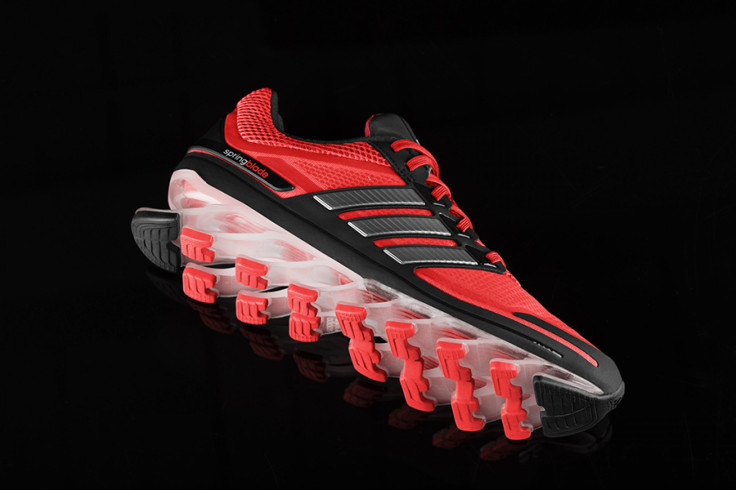Springblade Adidas Shoe Evokes Pistorius 'Blade Runner' Prosthetic Legs

One of the newest running shoes hitting the market is the Adidas Springblade, which adds a rather unconventional design element to the old familiar running shoe.
Sixteen polymer blades spring from the bottom of the Springblade’s sole, designed to act like little springs and add a boost to a runner’s gate. The shoe, which goes on sale Thursday, costs $180. While you might wonder just how well such a cutting-edge, expensive shoe might sell, remember that some of the hottest “barefoot” or minimalist running shoes provoked some quizzical looks when they were first introduced too.
Adidas says the blades of the Springblade are designed to take the energy from a runner’s foot landing on the ground and redirect it.
“Typically, if you get any energy coming back from the landing impact in a shoe, it goes back up,” James Carnes, the head of global design for Adidas, told Fast Company. “This is designed so that when you push down the blades help propel you forward.”
The design brings to mind the curvy prosthetics that the South African Olympian (and, it must be noted, accused murderer) Oscar Pistorius wears when running. Pistorius’ prosthetics, made of special carbon fiber, store energy when he lands on them, then release that energy when he lifts his leg up.
While that might seem like a clear advantage over able-bodied athletes, Pistorius ends up having to work harder with the rest of his body to compensate for the fact that he has no calves or feet. All of the muscles in the leg play into locomotion, so the cheetah-like “Blade Runner” prosthetics are mostly just bringing an amputee up to par with those still in possession of their biological limbs. Pistorius also ends up slower at the beginning of the race than other runners, since the cheetah blades don’t provide nearly the blast-off force that a runner’s calves and feet give off the starting block.
Whether or not this energy-storing principle will turn out to be an improvement on the running shoe design remains to be seen. Adidas has finely tuned the Springblade’s features to adjust for different sizes -- the blades on a size 10 men’s shoe will be differently calibrated than the blades on a woman’s size 7, according to Gizmodo.
The positioning of the Springblade’s blades also mean this is likely a shoe best-suited for tracks and city streets. One can imagine sand, mud or gravel getting caught in between the blades quite quickly on a trail run.
The idea of putting extra spring in a runner’s step isn’t totally new -- in fact, earlier in July, a researcher at the University of Central Lancashire unveiled his design for a sneaker that incorporates lightweight springs from a UK mattress company. But those shoes are more intended to reduce injury, not send you flying. If you’d rather just bounce down the street, invest in a pogo stick.
© Copyright IBTimes 2024. All rights reserved.











